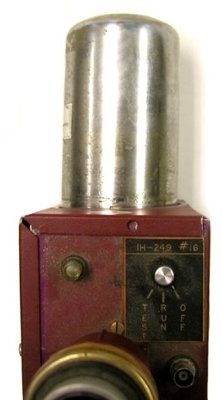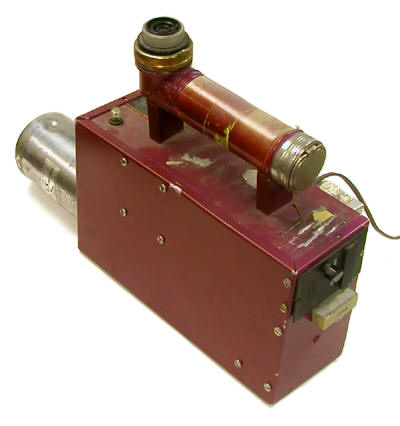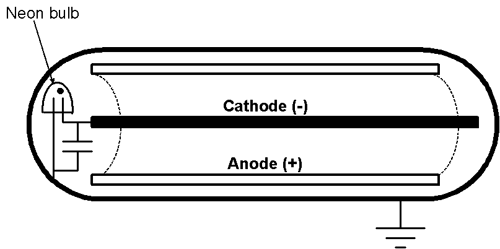Integrating Pulse Discharge Ionization Chamber Detector (ca. 1967-1970)


The Integrating Pulse Discharge Ionization Chamber detector was developed by Carl Distenfeld and William Bishop at Brookhaven National Laboratory (BNL) in the mid 1960s. Its original purpose was to measure doses in the pulsed radiation fields at BNL's Alternating Gradient Synchrotron (AGS) and Cosmotron accelerators. Standard rate meter instruments could not respond accurately to the radiation pulses which tended to be 2 microseconds to 400 milliseconds in duration with a repetition period of one to ten seconds.
The IPDIC detection chamber is a modified version of one developed earlier by Geophysical Measurements Corporation of Tulsa Oklahoma. It consists of a steel cylinder (11 1/2" long, 3" in diameter) that is lined with graphite-coated polyethylene, and is filled with ethylene gas at a pressure of ten atmospheres. One end of the chamber can be seen projecting from the front end of the instrument case in the above photos.

An inner cylinder serves as the anode while the cathode runs down the center of the chamber. A neon glow lamp is connected between the cathode and outer wall. The high voltage between the anode and cathode is set at 1000 volts or so while the potential difference between the outer wall and the cathode is initially zero. Radiation-produced ionization within the detector gas would create a potential between the wall and the cathode, and when this potential became sufficiently large (ca. 80 volts), the neon tube would break down thus discharging the cathode. The discharge pulse from the cathode would be registered by the mechanical scaler on the end of the instrument (see photo above right). The higher the absorbed dose rate, the faster the potential buildup on the cathode, and the faster the discharge pulses.
IPDIC detectors were incorporated into a number of different monitoring systems at Brookhaven. The portable unit shown here was known as an IRMA (integrating radiation monitor and alarm) counter. The batteries are kept in the handle which is made from a Boy Scouts of America flashlight. The end of the handle, facing up, holds a Sonalert "speaker" that registers peeps when the register records pulses. The Sonalert also produces a continuous alarm when a preset dose (count) is exceeded.
Donated by Brookhaven National Laboratory courtesy of Steve Musolin.
References
- Distenfeld, C., Bishop, W. Radiation Monitoring and Dosimetry with Integrating Pulse Discharge Ionization Chamber Detectors. Nucl. Inst. Meth. 49: 1967.
- Picinich, L., Distenfeld, C. A Radiation Monitoring and Alarm System (AMOS II) for Habitable Areas of an Accelerator Complex. BNL Report 17025; 1972.
- Steve Musolino, personal communication.
- Carl Distenfeld, personal communication.
